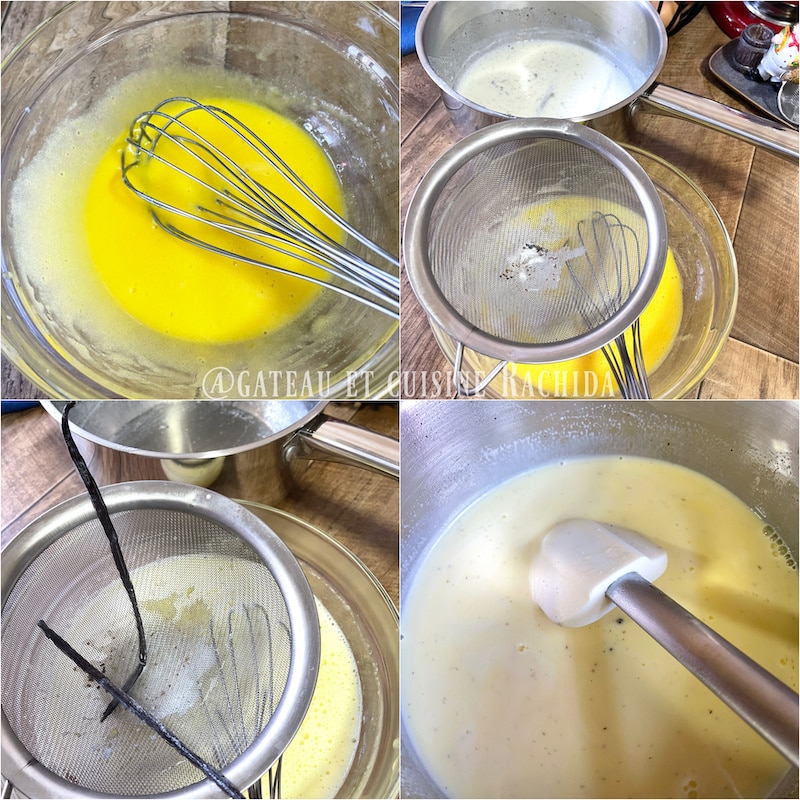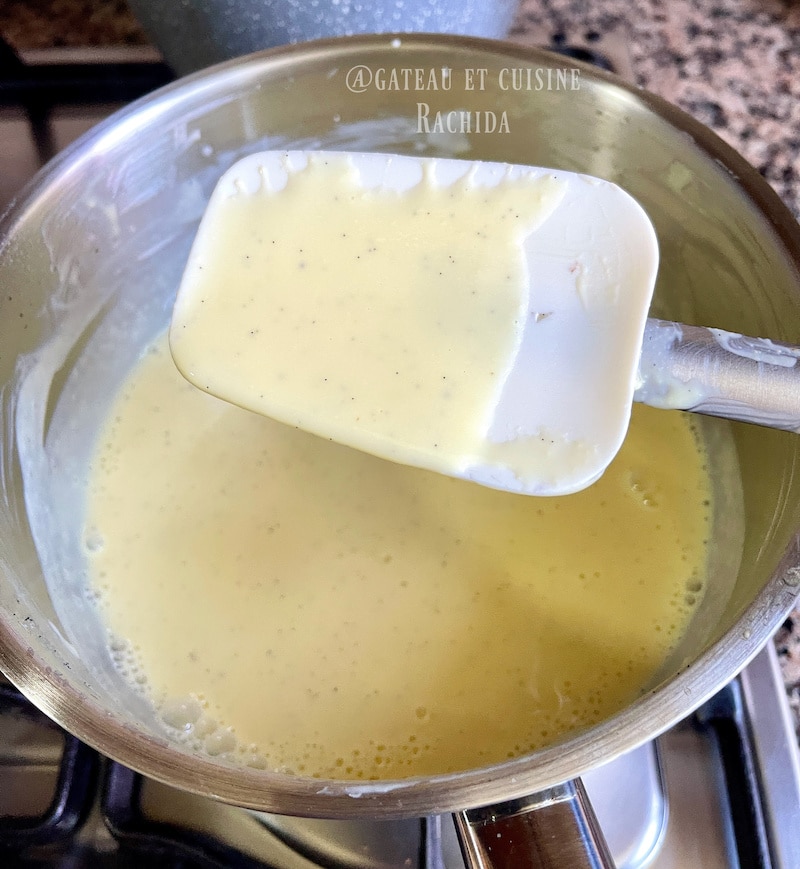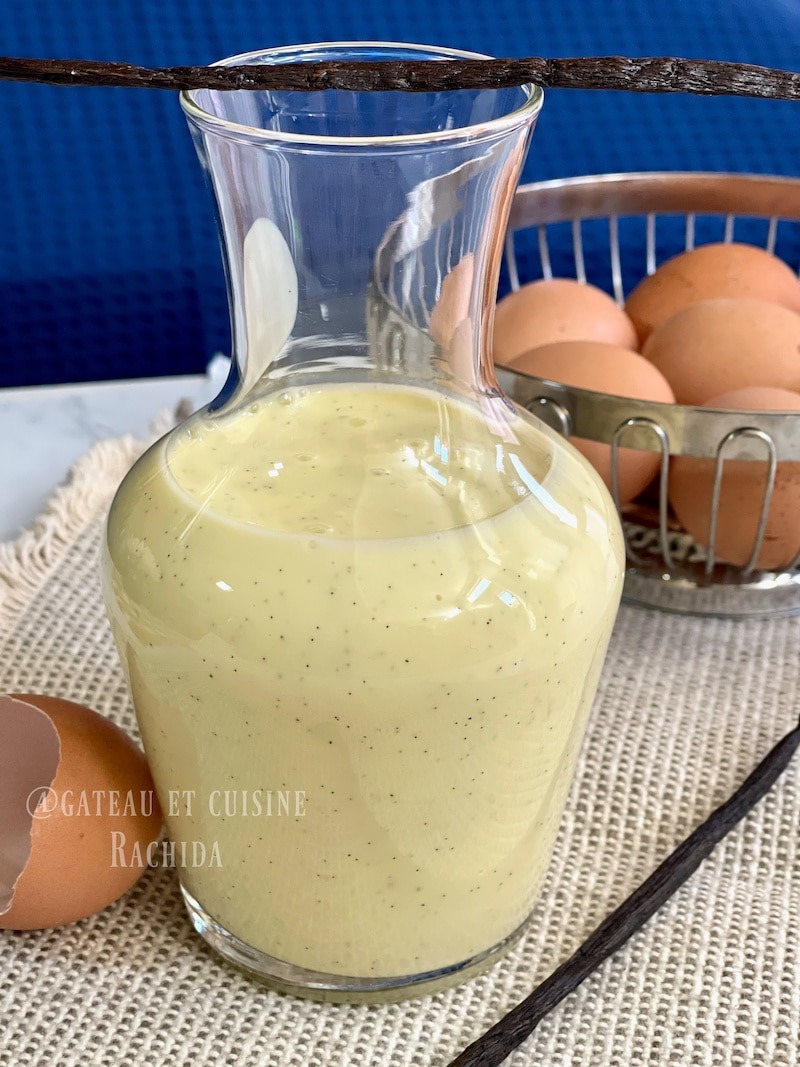The secret to a Smooth and Successful Crème Anglaise
Everyone wants to achieve a thick, creamy custard. This is ideal for drizzling over a nice piece of cake or brownie. A custard that is too thin would just soak the cake, which isn’t very appetizing.
To achieve a very smooth and creamy custard, you need to use a technique to thicken the cream for a longer period. Thickening means heating it longer; however, the risk is that the cream might boil and curdle.
The secret to prolonging the correct thickening temperature without worry, until you get a super-smooth custard, is to play with the heat.
Remove the saucepan from the heat several times, stirring constantly. Lift the saucepan over the heat for a few seconds or to one side, return to the heat, remove and continue until the cream coats the spatula well.
By applying this gesture, you maintain the right thickening temperature without letting it exceed 85°C (185°F). If you are using a thermometer, remove the 83°C ( 181°F) cream from the heat. The temperature will rise slightly off the heat.

Preparation steps
NB: Find details of ingredients in the recipe card that you can print below.
1. Scrape the seeds from the split vanilla pod.
2. In a saucepan, heat the milk with one-third of the sugar, the scraped seeds, and the vanilla bean. Heat without bringing to a boil. You can cover the saucepan to prevent the vanilla flavor from evaporating (optional).
3. Remove from heat and let infuse for about twenty minutes.
4. Meanwhile, whisk the egg yolks with the remaining sugar until pale.
5. Reheat the milk, removing it from the heat just before boiling.
6. Pour a little hot milk over the egg mixture through a strainer to temper it. Stir constantly to prevent the eggs from cooking. You can pour in all the milk. The strainer will catch the milk skin and the vanilla bean.
7. Pour everything back into the saucepan and bring to medium heat.

Blanch the egg yolks and sugar and pour over the boiling milk.
8. Mix, stirring constantly with a spatula until the cream coats the spatula (be careful not to let it boil). A finger swiped across it should leave a visible line.
9. If you have a thermometer, remove from heat at 83-85°C (181-185°F).
10. Strain the custard into a container, being careful to collect all the vanilla seeds.
11. Place in the refrigerator, stirring occasionally to cool it quickly. You can cover it with plastic wrap directly on the surface until ready to use. This prevents a skin from forming on top.

Baked custard
